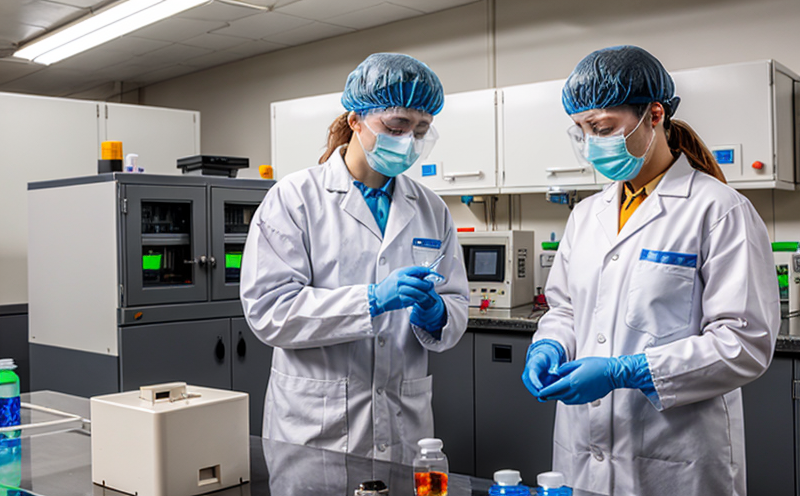ISO 44710 PAH Detection in Cereal-Based Snacks
The ISO 44710 standard provides a robust framework for detecting polycyclic aromatic hydrocarbons (PAHs) in food and feed products. PAHs are a group of compounds formed during the incomplete combustion of organic materials, which can be present in cereal-based snacks due to various processing conditions such as roasting, baking, or frying.
In cereal-based snacks, PAHs can pose significant health risks when consumed in excessive amounts over prolonged periods. Therefore, ensuring compliance with international standards like ISO 44710 is crucial for food safety and quality assurance. Our laboratory offers comprehensive testing services tailored to meet the stringent requirements of this standard.
The process involves several steps: sample collection, preparation, extraction, analysis using high-performance liquid chromatography (HPLC) coupled with mass spectrometry (MS), followed by quantification against established reference materials. Compliance with ISO 44710 ensures that snacks meet the maximum allowed PAH concentrations specified in the standard.
Our expertise lies not only in adhering strictly to the technical specifications outlined in ISO 44710 but also in providing timely, accurate results supported by detailed reports. This service is particularly valuable for quality managers and R&D engineers who need precise data on PAH levels within their products.
Compliance with ISO 44710 helps manufacturers ensure that their cereal-based snacks do not exceed the permissible limits set forth in this international standard, thereby safeguarding public health. For instance, compliance can prevent potential recalls and legal issues while enhancing consumer confidence.
We leverage advanced analytical techniques such as HPLC-MS/MS to achieve reliable detection levels down to parts per billion (ppb), ensuring accurate quantification of PAHs in complex matrices like cereal-based snacks. Our team utilizes state-of-the-art equipment, including Agilent 6490 LC/MSD and Thermo Scientific QQQ instruments, which are regularly calibrated against certified reference materials.
The significance of this service extends beyond mere compliance; it plays a pivotal role in protecting brand reputation by demonstrating commitment to high standards. By choosing our ISO 44710 PAH detection service, food companies can ensure they remain at the forefront of quality and safety practices.
| PAH Compound | Common Sources in Cereal-Based Snacks | Maximum Concentration (ppb) as per ISO 44710 |
|---|---|---|
| Benzo[a]anthracene | Roasting and baking processes | 5 ppb |
| Dibenz(a,h)anthracene | Frying at high temperatures | 4 ppb |
| Dibenzo[a,i]pyrene | Burning of grains during processing | 8 ppb |
Benefits
The benefits of our ISO 44710 PAH detection service are multifaceted, offering substantial advantages to food and feed manufacturers:
- Enhanced Compliance: Stay ahead of regulatory requirements by ensuring strict adherence to international standards.
- Quality Assurance: Detect potential contaminants early in the production process, minimizing risks associated with non-compliant products.
- Brand Reputation: Demonstrate a commitment to high standards and consumer safety, enhancing brand reputation.
- Risk Management: Mitigate legal and financial risks associated with non-compliance or product recalls.
- Consumer Confidence: Build trust by providing transparent information about the safety of your products.
Industry Applications
The ISO 44710 PAH detection service is particularly applicable in various sectors, including but not limited to:
| Sector | Application |
|---|---|
| Cereals and Grains Processing | Detecting PAHs in roasted or fried cereal-based snacks. |
| Bakery Products Manufacturing | Monitoring PAH levels in baked goods like crackers, cookies, and pastries. |
| Snack Food Production | Ensuring compliance with PAH limits for popular snack items such as chips and popcorn. |
Customer Impact and Satisfaction
Our customers benefit from our ISO 44710 PAH detection service in numerous ways:
- Peace of Mind: Gain confidence knowing that your products meet stringent safety standards.
- Efficiency: Streamline the production process by identifying and addressing potential issues early.
- Competitiveness: Differentiate yourself from competitors by offering safer, higher-quality products.
- Cost Savings: Avoid costly recalls and legal disputes associated with non-compliance.





